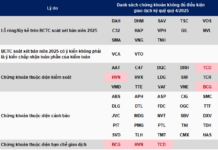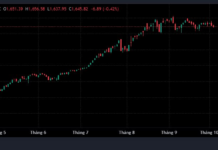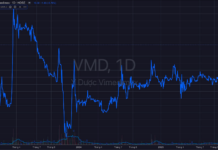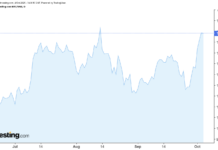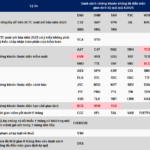
The spot gold price entered last week at around $2,024/ounce, with a slow but steady increase until mid-week, before a statement from the US Federal Open Market Committee (FOMC) and a press conference by Federal Reserve Chairman Jerome Powell on Wednesday afternoon (January 31) dashed hopes of a spring interest rate cut by the Fed and pushed gold prices down.
Shortly after, on Thursday morning (February 1), gold rebounded to the highest level of the week at $2,064.28/ounce and continued trading around $2,050/ounce, until the US employment data was released on Friday morning (February 2) with a figure double the forecast, pulling gold back to around $2,030/ounce.
Despite the significant fluctuations, the global gold price still increased by nearly 1% for the week.
In the domestic market, the price of gold last week increased along with the global trend. At the end of the week, gold was priced at 76.05 – 78.7 million VND/tael (buy – sell), compared to 73.9 – 76.72 million VND/tael (buy – sell) the previous week.
In January 2024, US employers created an additional 353,000 jobs, far exceeding economists’ estimates of 180,000. The world’s leading economy continues to experience strong growth, with robust labor productivity encouraging businesses to hire and retain more employees than expected, a trend that could protect the economy from a recession this year.
Following this data, the CME Fed Watch Tool shows that traders currently expect a 70% probability of a US interest rate cut in May, down from 92% before the release of the data. Interest rate cuts usually increase the appeal of gold bars – a non-yielding asset – and vice versa.
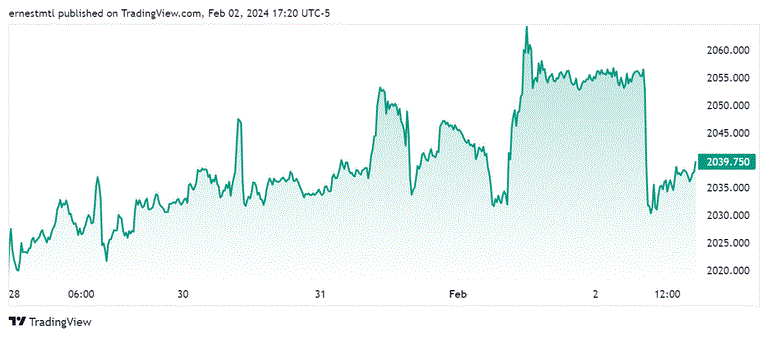
Gold price movement.
The results of this week’s Kitco News survey clearly show a divergence in views between analysts and retail investors, with two-thirds of analysts losing confidence in the prospects of precious metals prices, while most retail investors still expect prices to rise next week.
Frank McGhee, director of precious metals at Alliance Financial, is among those surveyed who believe that gold will continue to decline. He said, “The market is wrong in making predictions because the US labor market continues to grow strongly and we have an election year.”
Naeem Aslam, Chief Investment Officer at Zaye Capital Markets, said the employment data and FOMC statement were wake-up calls for the gold market, and said there are still many risk factors leading to price declines.
He said, “Last week was a reality check for the upward trend in prices.” “First, the Fed brought speculators back to reality when it said they should not be thinking about an interest rate cut in March. And the latest employment figures are further affirmation of this issue.”
Aslam stated: “All of this has caused the dollar index to rise sharply and that is putting pressure on gold prices.” “The important gold price level to watch now is $2,000/ounce, and if the price falls below this level, the market will be even more panicked.”
James Stanley, senior market strategist at Forex.com, switched from predicting price increases to predicting price declines after seeing gold fail to surpass resistance around $2,050-$2,082. He said, “The ‘bulls’ (meaning the uptrend) had an opportunity this week but once again couldn’t surpass the resistance zone of $2,050-$2,082.” “The Fed is not cutting interest rates in March and a strong employment report may provide enough impetus for bearish price speculators to capitalize on and finally we could see the first test below $2,000 in 2024.”
This week, 12 analysts participated in Kitco News’ gold survey and Wall Street sentiment has clearly shifted to a distinct short-term bearish price outlook. Only two analysts, equivalent to 17%, predicted higher gold prices next week, while 8 analysts, accounting for 66%, predicted lower prices. Two others, accounting for 17%, predicted gold prices will remain flat next week.
Meanwhile, 123 Chính Street survey votes have attracted interest from retail investors, where the majority still maintain an optimistic attitude. 66 retail investors, accounting for 54%, expect gold prices to rise next week; another 27%, equivalent to 22%, predict prices will decline; while 30 respondents, or 24%, maintain a neutral outlook on short-term prospects for precious metals.
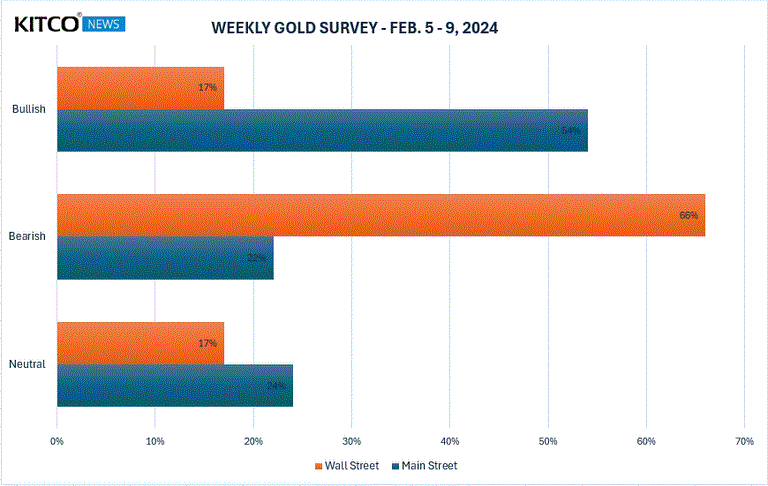
Kitco News survey results for gold prices in the week of February 5-9.
The focus of the gold market next week will be the Middle East, as the only major data release will be the PMI for the services sector on Monday (February 5), although the market will also monitor weekly jobless claims on Thursday (February 8) for further insight into the current employment market.
Reference: Kitco News
















